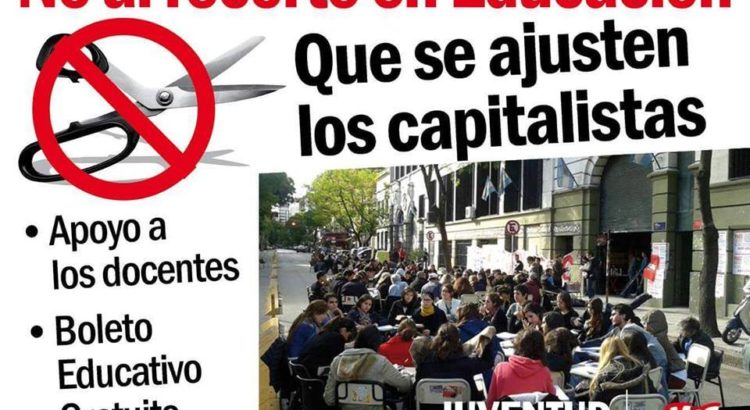El artículo presenta una definición de la tecnología como una fuerza productiva social y precisa el significado de esta caracterización frente a otras interpretaciones. Analiza la doble finalidad de la tecnología, su componente universal y sus rasgos derivados de las leyes del capital. Distingue la tecnología de la técnica por el uso de procedimientos científicos y la incidencia del criterio de rentabilidad. Subraya el impacto diferencial del proceso de valorización sobre la ciencia y la tecnología. Explica como se relaciona la ideología de las clases dominantes con las culturas tecnológicas. Propone analizar el contenido social de la innovación en relación a los conflictos de clase. El autor plantea una hipótesis sobre el lugar de los estudios de la tecnología en las ciencias sociales y naturales. Finalmente formula una propuesta de utilización provechosa de la tecnología, dentro de un proyecto emancipatorio
LA TECNOLOGIA COMO FUERZA PRODUCTIVA SOCIAL: IMPLICANCIAS DE UNA CARACTERIZACION.
La caracterización de la tecnología como una fuerza productiva social distingue al marxismo de otras concepciones teóricas contemporáneas. La tecnología es analizada como una fuerza productiva porque encarna todo conocimiento científico aplicado a la producción, que se materializa en objetos -máquinas y artefactos- o en sistemas de gestión y organización de la actividad económica. Pero además esta fuerza productiva tiene un carácter explícitamente social, por su dependencia directa de las normas de funcionamiento del sistema capitalista.
La tecnología actúa en dos dimensiones: sirve al cumplimiento de una finalidad práctica y contribuye a la valorización del capital. Viabiliza de esta forma la creación de valores de uso que operan en el mercado como valores de cambio. Tomando una clasificación de Dussel se puede denominar a la primera función «tecnología en general» y a la segunda «tecnología como capital».
Partiendo de esta caracterización, el cambio tecnológico puede definirse como toda modificación introducida en la actividad económica por nuevos productos, procesos de trabajo y formas de organización de la producción, que corresponden a las posibilidades técnicas («tecnología en general») y a los principios del beneficio («tecnología como capital»). Una invención es un descubrimiento que cumple los requisitos de utilidad (primer aspecto) y una innovación es la aplicación productiva que satisface las exigencias de rentabilidad (segundo aspecto).
Al entender a la tecnología como una fuerza productiva social se facilita la comprensión de sus aspectos universales y de sus rasgos específicamente capitalistas. El estudio que realizó Marx de los tres componentes de la máquina (fuerza motriz, mecanismos de transmisión y máquinas-herramientas) corresponde a la «tecnología en general», mientras que su investigación de la máquina como instrumento de generación de plusvalía relativa se ubica en el marco de la «tecnología como capital». El concepto fuerza productiva social tiene en cuenta este doble carácter de la maquinaria, como medio para fabricar más y mejores bienes y como herramienta de la explotación de los trabajadores.
En cualquier tecnología particular -un sistema informático, una máquina textil, o un tipo de gestión administrativa- siempre está presente una función universal y un rol en la valorización del capital. La noción fuerza productiva social subraya esta determinación simultánea, que sitúa al cumplimiento de una tarea y a la creación de beneficios como los dos parámetros con que se mide la efectividad de una tecnología.
TECNOLOGIA Y TECNICA.
Desde el punto de vista histórico, la noción fuerza productiva social facilita la distinción de la tecnología con respecto a la técnica. A diferencia de esta última actividad, que se desenvuelve con métodos pre-industriales a través de los oficios, la tecnología constituye un sistema de acciones orientadas a transformar objetos en forma eficiente, que exige un grado de conocimiento organizado muy superior a la destreza técnica. Requiere no solo «saber hacer», sino también «saber como hacer». Este aprendizaje se logra con la utilización de conocimientos científicos, que no estaban disponibles cuando prevalecía el uso de la técnica empírica .
La tecnología es «la técnica que pasa por la ciencia, se asocia al laboratorio y se utiliza en la fábrica» . Históricamente la tecnología surgió de la técnica con la profesionalización del ingeniero y el abandono de la actividad artesanal. La sustitución de una destreza subjetiva por una labor formalizada marcó el punto de ruptura entre ambas otra disciplinas . Pero a esta caracterización -muy desarollada por autores racionalistas como Bunge – debe añadirse el sometimiento de la tecnología a las reglas del capital, que se manifiesta en el traslado de los criterios de rentabilidad a la enseñanza técnica y en la fusión de la ingeniería, el management y las finanzas en la preparación de los ingenieros como directivos de empresa.
Al definir a la tecnología como una fuerza productiva social se evita extrapolar las características contemporáneas del cambio tecnológico a cualquier modo de producción. Este defecto es particularmente visible en los economistas neoclásicos, que se refieren al «progreso técnico», como un acontecimiento que navega en modelos imaginarios fuera del tiempo y del espacio. Pero también historiadores como Gille , utilizan la noción «sistema técnico», para investigaciones de la antiguedad, el medioevo o el capitalismo, sin establecer una diferencia cualitativa entre la «concatenación de estructuras y conjuntos técnicos» de los «sistemas» egipcio-mesopotámico, clásico-renacentista o industrial y contemporáneo.
En esta contrastación entre «sistemas» quedan oscurecidas las peculiaridades de la tecnología, determinadas por el componente científico, indicado por los racionalistas y por la influencia del proceso de valorización, señalada por los marxistas.
Este mismo problema aparece en el análisis de los impulsos psicológicos, lúdicos o irracionales, que subyacen en el proceso innovador, realizado por autores culturalistas que también tienden a identificar técnica con tecnología. La indagación del aspecto subjetivo de la innovación requiere diferenciar ambos conceptos y contextualizarlos adecuadamente.
CIENCIA Y TECNOLOGIA.
Al realzar las conexiones entre la tecnología y las leyes de la acumulación, el concepto fuerza productiva social ayuda a delimitar la frontera que separa a la ciencia de la tecnología.
Tradicionalmente se consideró a la tecnología como una simple aplicación de la ciencia, carente de dimensión intelectual propia. Pero a partir del rechazo del «modelo unilineal» – que atribuía total primacía a los descubrimientos en relación a las aplicaciones- se ha demostrado que esta última secuencia no es de ninguna manera única ni predominante. Por el contrario, prevalece una interacción entre las preguntas teóricas que formula la ciencia y las soluciones prácticas que encuentra la tecnología. La ciencia y la tecnología constituyen dos ámbitos separados por instituciones, reglas y tipos de conocimientos, que se influyen mutuamente sin preeminencia de uno sobre otro . Esta diferencia se expresa en la aparición de una sociología y una filosofía de la tecnología delimitadas de sus equivalentes tradicionales en la ciencia.
En la tecnología se estudia cómo y porqué se desarrollan objetos útiles con finalidades prácticas, mientras que en la ciencia se analizan diversas teorías con el objetivo de alcanzar la verdad. Existe una diferencia de propósitos entre «conocer por conocer y conocer para hacer». A la tecnología le interesa la aplicabilidad y se desenvuelve por medio de la creación de artefactos, mientras que la ciencia se desarrolla a través de la publicación de artículos. Por eso Price dice que la primera es «papirofóbica» y la segunda es «papirocéntrica».
En oposición a la idea que la tecnología constituye una simple aplicación de la ciencia, Perrin destaca que el conocimiento teórico depende de los instrumentos disponibles y que la investigación científica está condicionada por el desarrollo de los objetos. En la misma linea, Basalla reivindica el papel del pensamiento visual sobre el verbal y la gravitación de la acción práctica sobre las intuiciones teóricas.
Aplicando la noción de fuerza productiva social podría afirmarse que la ciencia mantiene una mayor autonomía de las exigencias inmediatas del proceso de valorización y su acción está menos determinada que la tecnología por los requerimientos sociales de la acumulación. Lo que distingue la actividad de preguntarse por la validez de una teoría de la acción de construir un prototipo, es la mayor influencia del principio de rentabilidad sobre esta última labor.
En la división de tareas entre la ciencia pura que estudia las propiedades de un fenómeno, la ciencia aplicada que los transforma en objetivos humanos y la tecnología que concreta su aplicación productiva, las reglas de la competencia y el mercado tienden a reforzarse en los últimos eslabones de la cadena .
Sin embargo, la creciente mercantilización contemporánea de la ciencia pone un legítimo signo de interrogante en estas distinciones entre ciencia y tecnología. Lander por ejemplo afirma que con la consolidación de los laboratorios en las grandes compañías, la privatización de la universidad y el estricto control comercial de las patentes, la ciencia asume objetivos utilitarios, mientras que la tecnología se desliza hacia problemas más teóricos. Vessuri considera que esta «cientifización de la tecnología e industrialización de la ciencia» tiende a reunificar la ciencia pura con la tecnología industrial.
La fusión actual de las «tecno-ciencias» es muy visible en algunas ramas, como la ingeniería química o la biología molecular y en ciertas industrias, como la farmaceútica, en dónde las reglas de costo-beneficio gobiernan todas las etapas de la investigación.
Pero es cierto también que este tipo de convergencia no se ha generalizado a todos los sectores, ni se ha consumado en todas las industrias. El surgimiento de nuevas disciplinas teóricas recrea además, la diferenciación entre ciencia y tecnología. Lo que fusiona el laboratorio se vuelve a desdoblar en la investigación ulterior. La linea demarcatoria entre ciencia y tecnología se ha vuelto más borrosa y por eso el concepto «fuerza productiva social» abarca también a todas las actividades científicas sometidas directamente a las leyes del capital.
FACTIBILIDAD TECNICA Y VIABILIDAD ECONOMICA.
En los estudios específicamente económicos de la tecnología es frecuente la distinción entre el rasgo «técnico» y el aspecto propiamente «económico» de la innovación. Se estama que la factibilidad del primer elemento debe converger con la viabilidad del segundo . Pero esta caracterización se limita a distinguir la función útil de la función rentable de la tecnología (personificadas en la figura del ingeniero y el economista) y es por lo tanto, puramente descriptiva. No esclarece cual es el patrón de funcionamiento que guía el uso de la tecnología y cuales son los principles condicionantes de su aplicación.
Para entender porqué el cambio tecnológico adopta en el capitalismo un carácter convulsivo e incierto, para explicar la predilección por innovaciones que refuerzan el control patronal del proceso de trabajo y para comprender porqué la introducción actual de nuevas tecnologías de la información viene acompañada de la masificación del desempleo, el estancamiento de los salarios y la expansión de la pobreza, la noción fuerza productiva social resulta irreemplazable. Este concepto explica de qué forma en la acumulación se produce un choque entre la optimización técnica y la maximización del beneficio, que se manifiesta en la sobreproduccción y el sub-empleo de los recursos económicos.
En algunos enfoques los componentes «técnico y económico» de la tecnología son presentados como los criterios interno y externo de su evaluación . Se considera que la eficiencia es un parámetro del primer tipo, mensurable por la capacidad para gobernar cierta propiedad en función de un objetivo buscado. En cambio los patrones que fija cada sociedad para evaluar la idoneidad de cada tecnología, son interpretados como indicadores del segundo tipo.
Esta distinción entre criterios internos y externos tiene puntos en común con los conceptos «tecnología en general» y «tecnología como capital», ya que en ambas intepretaciones se acepta que la eficiencia depende de parámetros objetivos e independientes de las metas del capital. Pero para los marxistas el principio rector de la «evaluación externa» son las leyes del capital y no criterios políticos, económicos o culturales establecidos por cada sociedad. Suponer que la «sociedad» es una entidad homogénea que fija las reglas de la tecnología en forma colectiva y consensuada, equivale a ignorar que las decisiones de innovación son patrimonio exclusivo de la clase capitalista. Solo este sector social detenta la propiedad de los recursos tecnológicos y cuenta con el poder para definir su utilización.
EL SIGNIFICADO SOCIAL.
El concepto fuerza productiva social implica una caracterización sociológica de los procesos de cambio tecnológico, muy diferente de los enfoques más difundidos en la actualidad. Los autores deterministas tecnológicos , constructivistas y co-evolutivos (Gille) suelen discutir si la «tecnología impacta a la sociedad», si por el contrario la «sociedad configura a la tecnología», o si predomina un proceso de «co-evolución» entre ambos fenómenos .
Lo «social» se refiere en el primer caso, al impacto de las nuevas tecnologías sobre las costumbres. En el segundo enfoque indica la influencia que tienen distintos grupos en la «negociación de un artefacto». En un caso se alude a transformaciones humanas derivadas de la tecnología y en el otro a la influencia de diversos agrupamientos en la forma final que adopta un objeto. Los co-evolucionistas intentan aunar ambas visiones. En los tres casos lo «social» alude a conflictos generados en la innovación, pero no se explicita la naturaleza de estos choques, ni se aclara tampoco cual es el papel de las clases sociales en estos procesos. La simple enumeración de «actores relevantes» (consumidores, usuarios, fabricantes, etc) no alcanza para conceptualizar los tres tipos de conflictos centrales que acompañan al proceso innovador.
Enfrentamientos derivados del aumento de la tasa de explotación, rivalidades por la apropiación de la renta tecnológica, y choques surgidos de la oposición entre utilidad social de la innovación y el imperativo de la ganancia.
Estudiar el cambio tecnológico a través de las clases permite interpretar cuales son los intereses en juego en la «configuración de la tecnología» y comprender las diversas formas de expropiación que se desenvuelven por medio del cambio tecnológico. A través de la innovación se procesa un aumento de la extracción de plusvalía en el proceso productivo y una apropiación de rentas, en favor de los empresarios y en desmedro de los creadores de nuevas tecnologías.
Este conflicto ha sido estudiado en la historia de la tecnología, como una oposición de objetivos entre inventores e innovadores. El ejemplo clásico es el contraste entre Watt -que concibió la máquina de vapor desinteresándose de su comercialización, Boulton -que se ocupó de negociarla y patentarla- y Arwkright que la convirtió en un instrumento de explotación fabril . La diferenciación no responde solamente a tipos psicológicos distintos – como subrayaba Schumpeter- sino a una división de tareas asociada a la extracción, la transferencia y la realización de la plusvalía.
El análisis de la tecnología como fuerza productiva social involucra el estudio de este tipo de confiscación del conocimiento, que se institucionalizó desde el momento en que el inventor independiente quedó absorbido por los laboratorios de las grandes compañías. Mediante el sistema de patentes se vehiculiza una apropiación de los derechos de los inventores sobre cualquier innovación realizada en la empresa . Estudiar a la tecnología como una fuerza productiva social permite relacionar este tipo de conflictos con la lógica objetiva de la innovación.
CULTURA.
Tener presente el contenido de clase en el análisis, sirve por otra parte, para contextualizar adecuadamente el fundamento cultural de ciertas habilidades, formas de organización laboral, o tipos de maquinarias, que ha son generalmente investigados por los autores de la revista «Technology and Culture» . Estos análisis destacan que la gran diversidad de características culturales de la innovación son dependientes de las singularidades nacionales, regionales o sectoriales.
Sin embargo solo explican parcialmente el origen de los éxitos y los fracasos tecnológicos y no dan cuenta debidamente del propósito lucrativo primordial de la innovación. Los patrones de novedad y selección tecnológica nunca son primordialmente culturales. Están antecedidos y condicionados por los intereses materiales de las clases dominantes, que imponen la adaptación de la tecnología a los principios de rentabilidad, mercado y explotación.
El concepto de fuerza productiva social ubica a las culturas tecnológicas, en el marco de las necesidades y los intereses de las clases dominantes. De esta forma se contextualiza la «vitalidad innovadora» en un país, o la «ausencia de ímpetu tecnológico» en otra comunidad, sin desdibujar las finalidades centrales de la innovación en el capitalismo.
No existe ninguna contradicción entre realzar la importancia del contexto económico y subrayar la relevancia de la cultura. El concepto fuerza productiva social facilita la integración de ambas explicaciones, evitando una antinomia ociosa entre la primacía de las normas culturales o el mercado en la determinación del cambio tecnológico. La burguesía ejerce dominación ideológica del proceso de innovación porque es propietaria material de los recursos tecnológicos. Este enfoque unitario surge del planteamiento propuesto por el marxismo.
LA MIRADA DESDE EL OBSERVATORIO.
Desde el punto de vista metodológico, el concepto fuerza productiva social induce el estudio de la tecnología como una disciplina de las ciencias sociales, situada en el límite con las ciencias naturales. La tecnología no es asimilable a la ingeniería, a la física o a la química, pero depende significativamente de los conocimientos de estas y otras disciplinas. La estrecha relación con las ciencias naturales diferencia a los estudios generales de la innovación de otras ciencias sociales clásicas, como la economía, la sociología o la política. La tecnología es un área de investigación rodeada por disciplinas «duras» y «blandas». Se asienta en las matemáticas, se nutre de las humanidades e influye sobre el arte.
Se encuentra en la «frontera caliente» de las ciencias sociales con las ciencias naturales. Recibe criterios de análisis la economía o la sociología, pero no está totalmente regida por este tipo de principios.
El concepto fuerza productiva social tiene en cuenta esta determinación múltiple y esta diversidad de vasos comunicantes de la tecnología con otras ramas del saber. La distinción entre «tecnología en general» y «tecnología como capital» permite justamente distinguir, los aspectos universales de la tecnología derivados de su cercanía con las ciencias naturales, de la innovación como proceso social e interpretable con los parámetros de las ciencias sociales.
Pacey conceptualiza esta diferenciación, distinguiendo a la «tecnología en un sentido restringido» de la «tecnología en un sentido abarcativo». Considera que se trata de una situación equivalente a la medicina, en dónde también resulta conveniente discriminar entre la «ciencia médica universal» y la «práctica médica específica». La primera sintetiza principios de validez general, mientras que la segunda se refiere a aplicaciones dependientes de condiciones organizativas, económicas y culturales particulares. Las categorías «tecnología en general» y «tecnología como capital» cumplen una función semejante, con la ventaja de situar estas determinaciones socio-históricas en las leyes del capital.
Cualquier enfoque de la innovación refleja una concepción del mundo, que se corresponde con intereses sociales particulares y puntos de vista de clase. No existen teorías «puras» y exclusivamente experimentales de la tecnología. Las preguntas que plantea y los temas de investigación que propone cada concepción, siempre se relacionan con la «mirada» de un sector y con su «conciencia posible», es decir con el recorte de la realidad que espontáneamente tiende a realizar una clase social.
Al buscar desligarse explícitamente de los intereses de las clases dominantes, al jerarquizar el análisis de la explotación y al asociar las contradicciones de la innovación a las del capitalismo, el marxismo encara una «mirada» crítica y desmistificadora. Su posicionamiento en el campo de los oprimidos le permite alcanzar una comprensión más integral de la tecnología. En un observatorio que captara todo el escenario de la innovación, los marxistas estarían ubicados en los pisos superiores del mirador, frente a otras teorías situadas en los niveles inferiores. El auto-ocultamiento de la explotación es la principal limitación cognitiva que impone el punto de vista de las clases dominantes a estas últimas concepciones .
Es igualmente cierto que una posición más favorable en el mirador no asegura una mejor asimilación de lo que se está observando. De la misma forma que un retrato depende de las cualidades del pintor, la acertada interpretación del cambio tecnológico depende de la capacidad de los investigadores, su conocimiento, sensibilidad y amplitud intelectual, con relativa independencia de la posición ideológica que adopten.
Desde cualquier escalón del observatorio se pueden formular interpretaciones valiosas o inútiles, contribuciones críticas o apologías irrelevantes. La distinción entre pensamiento científico y vulgar, que trazó Marx hace 100 años, está vigente para el análisis de la tecnología. El mismo abismo que separaba a Ricardo de Say en el campo de la economía política, divide aguas en la actualidad, en la sociología y en la filosofía de la innovación. El marxismo solo brinda una plataforma más favorable para encarar esta investigación, que se enriquece con el contacto, la asimilación y la re-elaboración de los puntos de vista opuestos.
UN PROYECTO EMANCIPATORIO.
El concepto fuerza productiva social tiene un claro significado político, al poner de relieve el carácter de clase que tiene el uso de ciertas innovaciones, asi como la ideología justificatoria de esta instrumentación. La tecnología no es un instrumento neutral del progreso. Los capitalistas la utilizan para maximizar sus beneficios, extendiendo incluso este principio al propio diseño de los artefactos. El concepto de fuerza productiva social subraya este aspecto de la «tecnología actuando como capital», que se evidencia nítidamente por ejemplo en la cadena de montaje taylorista.
La otra dimensión política de la noción fuerza productiva social es el proyecto que implícitamente contiene, en favor de la utilización socialmente provechosa de la tecnología. Esta propuesta surge del rechazo de la imagen racionalista del «progreso técnico», como una evolución ascendente de la humanidad garantizada por la simple aplicación productiva de los descubrimientos científicos.
La «tecno-euforia» es tan desacertada como la creencia espiritualista opuesta, en el «autodireccionamiento» de la tecnología . Los efectos nocivos del cambio tecnológico no tienen causas transhistóricas, ni se originan en la naturaleza del hombre, o en la rebelión de su alma. Tienen raíces sociales y no constituyen ninguna fatalidad.
El proyecto emancipatorio parte del reconocimiento del radio de posibilidades objetivas del cambio tecnológico. Una vez comprendidas estas potencialidades son los hombres, estructurados en torno a las clases sociales y en acuerdo a sus intereses y convicciones, quienes definen siempre la dirección del proceso innovador. Este curso es un resultado de confrontaciones sociales, que no viene pre-establecido por determinaciones tecnológicas.
Una propuesta socialista se nutre de la rica tradición de innovadores que concibieron sus aportes buscando favorecer el bienestar general y sin ninguna finalidad de lucro. «Inventar para cooperar, no para competir» ha sido el principio que históricamente impulsó la conducta de numerosos innovadores utopistas, cooperativistas, románticos, sindicalistas y socialistas.
Esta misma actitud también caracteriza la acción espontánea de la mayoría de los técnicos, ingenieros y científicos, que inventan bajo el impulso de la curiosidad y la propensión natural a mejorar las formas de trabajo . Este impulso no mercantil al cambio tecnológico, que apunta al logro de mayores satisfacciones en la vida social y laboral, ha estimulado la búsqueda de tecnologías alternativas a las dominantes actualmente. En el terreno del cambio tecnológico el proyecto socialista se nutre tanto de las tradiciones de resistencia a la explotación, como de las propuestas de emancipación social. La defensa de los derechos de los trabajadores contra las «flexibilizaciones laborales» y los proyectos de un nuevo uso de la tecnología están indisolublemente ligados. Constituyen dos momentos de un mismo proceso de ruptura del desenvolvimiento tecnológico con las exigencias de la ganancia. Otro tipo de sociedad y de tecnología pueden erigirse en base a este objetivo emancipatorio.
BIBLIOGRAFIA.
-Katz, Claudio. «La concepción marxista del cambio tecnológico». Revista Buenos Aires. Pensamiento económico, n 1, otoño 1996, Buenos Aires.
-Katz, Claudio. «El culturalismo en los estudios de tecnología». Causas y Azares, n 6, primavera de 1997, Buenos Aires.
-Callon, Michel; Latour, Bruno. La science telle qu’elle se fait. Introduction, La decouverte, Paris, 1991.
-Latour, Bruno. Nous n’avons jamais eté modernes. La decouverte, 1991, Paris. -Winner, Langdon. Tecnología autónoma, Gili, Barcelona, 1979.
-Bell, Daniel. El advenimiento de la sociedad pos-industrial. Alianza 1976, Madrid.
-Richta, Radovan. La civilización en la encrucijada. Siglo XXI, México, 1971.
-Mandel, Ernest. El capitalismo tardío, ERA, México, 1978.
-Martinez San Martín, Luis. «Historia de la técnica» en SanMartín, J. Estudios sobre sociedad y tecnología. Antrophos, Barcelona, 1992.
-Mitcham, Carl. Qué es la filosofía de la tecnología?. Anthropos, Barcelona, 1989
-Medina, Manuel. «Nuevas tecnologías, evaluación de la innovación» en SanMartín, J. Estudios sobre sociedad y tecnología. Antrophos, Barcelona, 1992.
-San Martin,J; Luján José Luis. Educación en ciencia, tecnología y sociedad en SanMartín, J. Estudios sobre sociedad y tecnología. Antrophos, Barcelona, 1992.
-Ben David, J. «El empresario científico y la utilización de la investigación» en Barnes, Barry. Estudios sobre sociología de la ciencia, Alianza, 1972, Madrid.
-Mulakay, Michael. «El crecimiento cultural de la ciencia en Barnes, Barry. Estudios sobre sociología de la ciencia, Alianza, 1972, Madrid.
-Piscitelli, Alejandro. Ciencia en movimiento. La construcción social de los hechos científicos CEAL, Buenos Aires, 1993.
-Pacey, Arnold. El laberinto del ingenio. Gilli, Barcelona, 1980.














 Users Today : 17
Users Today : 17 Total Users : 35460370
Total Users : 35460370 Views Today : 24
Views Today : 24 Total views : 3419124
Total views : 3419124